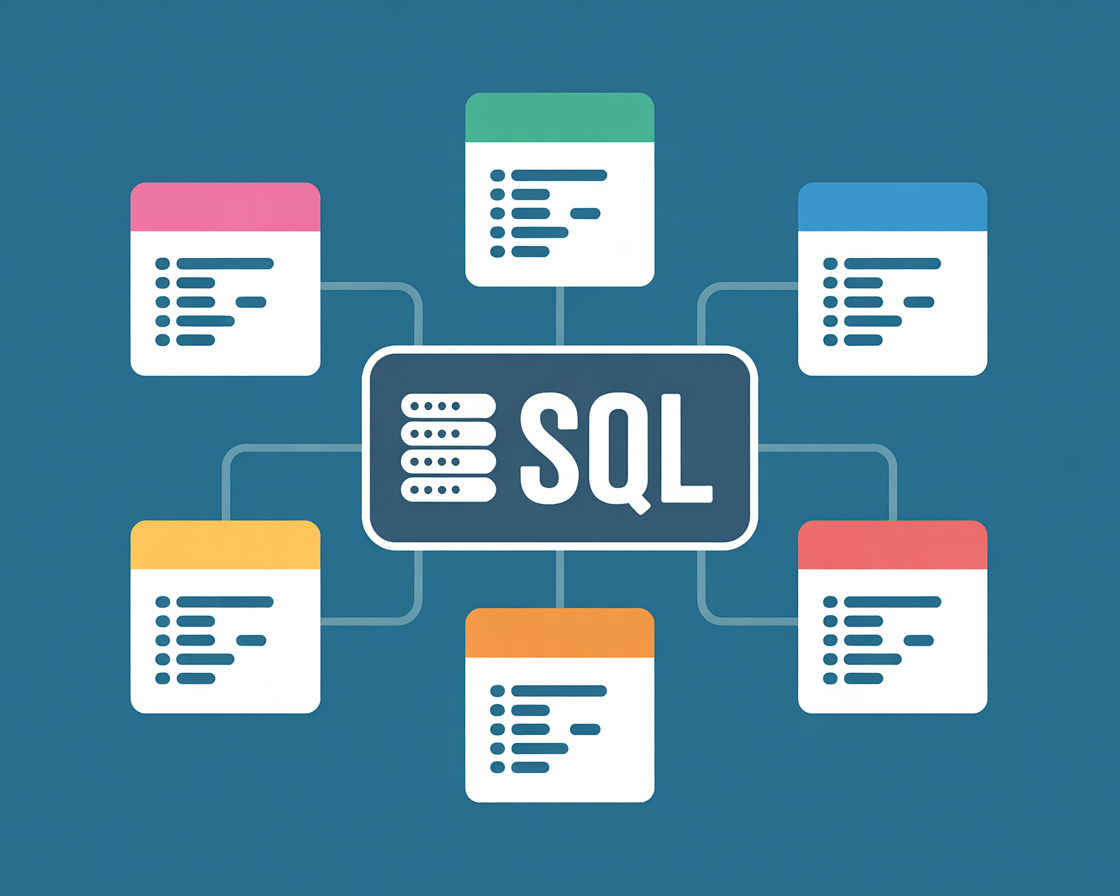

- Éducation
Learn SQonline: Mini-tutorial on key SQL techniques
Did you know that in 2025, more than 200,000 jobs in the US will require SQL skills? That’s according to recent LinkedIn insights. In a data-driven world, students and employees are confronted with huge challenges. They find it difficult to manage large datasets efficiently. Queries are often slow or return messy results. This lowers productivity in sectors such as finance or marketing. However, don’t be afraid. SQL has some powerful tricks to make things right. This mini-tutorial goes through the basics like where 1=1 and coalesce. You will learn practical sql queries. These will help you to have an advanced level of the database game. Let’s get started.
Why learn sql for beginners
SQL is Structured Query Language. It helps manage info in databases, almost like a way to chat with the data. Lots of jobs want you to know it these days. Data analysts, for instance, use SQL queries all the time. Students can quickly put it on their resumes. People can even get better jobs by getting better at SQL coding.
Plus, it works with stuff like SQL Server Management Studio or Oracle SQL developer. interest is growing in 2025. Fields like tech and healthcare are looking for people who get it. A Dataquest report says the SQL market will reach $9 billion before long. Begin with simple SQL stuff, then head to the more complex queries.
To wrap it up, taking SQL classes online can help you get hired. Even if you’re totally new to SQL, it’s fine. You don’t need any previous experience. Just try out some SQL statements.
1 – Mastering where 1=1 in sql queries
First, let’s see what 1=1 means. This is weird at first. But it is a sql trick for dynamic queries. It always evaluates to true. So, it doesn’t filter rows.
Why use it? In code, you construct queries with conditions. You start with where 1=1. Then you add AND clauses without any problem. There’s no need to check for the first condition.
As an example, think of a user search form. They choose the filters such as age or city.
Your code appends :
AND age > 30. The base is
SELECT * FROM users WHERE 1=1.
This prevents errors from happening in sql scripts. It’s a common practice in python sql integration. The developer community is very fond of it for writing clean codes.
Besides, it is also effective in ms sql or mysql. You can try it in sql fiddle online. The outcome will be flexible.
2 – Using qualify for advanced filtering
Next up is qualify. This feature is excellent in SQL for data analysis. It’s similar to having ‘but’ for window functions. Employ it to filter rows after you have made your calculations.
As an example, in Snowflake or Teradata SQL, you rank sales by region. Then qualify rank <= 3. This is the method that retains only the top three.
Why use the trouble? It makes the work of complex SQL queries much simpler. There is no need for subqueries. Just one statement is enough.
Take a case of a student who is analyzing exam scores.
SELECT
student,
score,
ROW_NUMBER() OVER (PARTITION BY class) AS rank
FROM scores
QUALIFY rank = 1.
It locates highest-scoring students for each class. Pretty good from a readability standpoint and also efficient.
Also, it is a great tool for performance tuning in sql. Minimal coding results in quicker execution.
3 – Row_number for ranking data
Row_number is a window function. It assigns numbers to rows based on the order you set. It is important in basic SQL queries, especially for pagination or handling duplicates.
Example:
SELECT name, salary, ROW_NUMBER() OVER (ORDER BY salary DESC) AS rank FROM employees.
This ranks by pay, highest first. In real life, an employee identifies top performers. A student paginates results. Also, combine with partition by for groups like departments. It follows ANSI SQL standards and works across databases.
4 – Exclude columns with except
Now, consider the except clause. It removes results, similar to set difference. Use it to exclude rows, but let’s focus on rows for now. The topic mentions exclude, which likely refers to excluding columns in a select statement. In some databases, like Spark SQL, use EXCEPT to remove columns. However, the standard method is: SELECT * EXCEPT (col1, col2) FROM table, in BigQuery or PySpark SQL. This cleans up the output and hides sensitive data.
For example :
SELECT * EXCEPT (password) FROM users.
FROM table
Simple but effective.
It helps ETL SQL processes. Transform data without any frills.
5 – Exists for subquery existence checks
Exists checks if a subquery returns any rows. It gives a true or false result. This is useful for finding correlations, such as identifying customers with orders.
For instance :
SELECT name
FROM customers
WHERE EXISTS (SELECT 1 FROM orders WHERE orders.cust_id = customers.id)
This query lists active buyers.
Why use it? It can be faster than using IN in SQL, especially with large datasets.
Here’s a case: An employee checks whether a department has any staff. This avoids counting the rows.
It also works with SQL data types handling. Exists functions with any type.
You can optimize with NOT EXISTS to check for absences.
6 – Coalesce for handling null values
Coalesce returns the first non-null value from a list. It handles missing data well.
Example:
SELECT COALESCE(address, ‘Unknown’)
FROM profiles.
This fills in the blanks. In SQL for data science, it is important to have clean datasets for analysis.
Take a student project. Merging tables with gaps can be tricky. Coalesce helps fix this.
Also, NVL in Oracle is similar, but Coalesce is the standard. You can use it in GROUP_CONCAT in SQL for aggregations.
7 – Syscat and sysinfo for database metadata
Syscat is part of IBM DB2. It is a catalog schema that holds metadata. Sysinfo provides system details. You can query syscat.tables to get a list of tables.
For example:
SELECT * FROM syscat.tables
WHERE tabschema = ‘YOUR_SCHEMA’.
This allows you to view structures. For admins, it’s crucial for understanding database layout. Employees use it for audits, and students learn about the internals. In Transact SQL, it’s similar to information_schema. It also helps with performance tuning in Oracle. Be aware of indexes.
8 – Lag and lead for time series analysis
Finally, lag and lead. Window functions for previous and next values. Lag gets the previous row. Lead gets the next one. In SQL Server Analysis Services, they are great for spotting trends.
For example:
SELECT
date,
sales,
LAG(sales) OVER (ORDER BY date) AS prev_sales
FROM daily_sales.
You can calculate changes.
For example, an analyst notices sales drops. You can find this by using prev_sales – sales. Students use this in projects, like stock analysis. It’s in advanced SQL and is useful for data storytelling.
Combine it with partition by for groups.
Putting it all together for SQL learning
Build a practical sql project using basic sql queries for a dashboard.
You could start by checking out your database structure using syscat.
Then, write a SELECT statement from your sales table, using where 1=1 as a starting point for filters that change. Add row_number for ranking in advanced sql queries, qualify to keep top 10,
Use coalesce to deal with empty regions, and exists to double-check inventory in another query.
Also, use lag to figure out growth over time.
This creates a strong query that sharpens sql coding and delivers insights,
To get good, practice every day on sites like SQL Zoo or HackerRank SQL. Check out problems on LeetCode.
Take online courses on SQL, we can suggest you to learn SQL Essentials by Edureka !
You can also find SQL courses if you want to be a Data Analyst, we recommand you to past a Data Analytics certificates !
You can even hook it up with Python to automate stuff. Start with basic queries before you get to the hard stuff.
Lots of people have used these methods to get somewhere.
For example, Alex learned SQL online and got a data internship. He used coalesce to make reports 20% faster. Sarah used lag and lead to analyze trends and got a promotion because of it. These stories show you how SQL techniques can help you solve hard stuff.
From where 1=1 to lag/lead, master sql for data analysis for career edges in 2025.
Putting in time now will totally pay off.
Ready to go? Check out E-newcademy.com for online SQL courses that fit everyone. Sign up today and go for it!
Unlock your potential. Don’t miss out!
© 2025 E-newcademy SASU All rights reserved.



